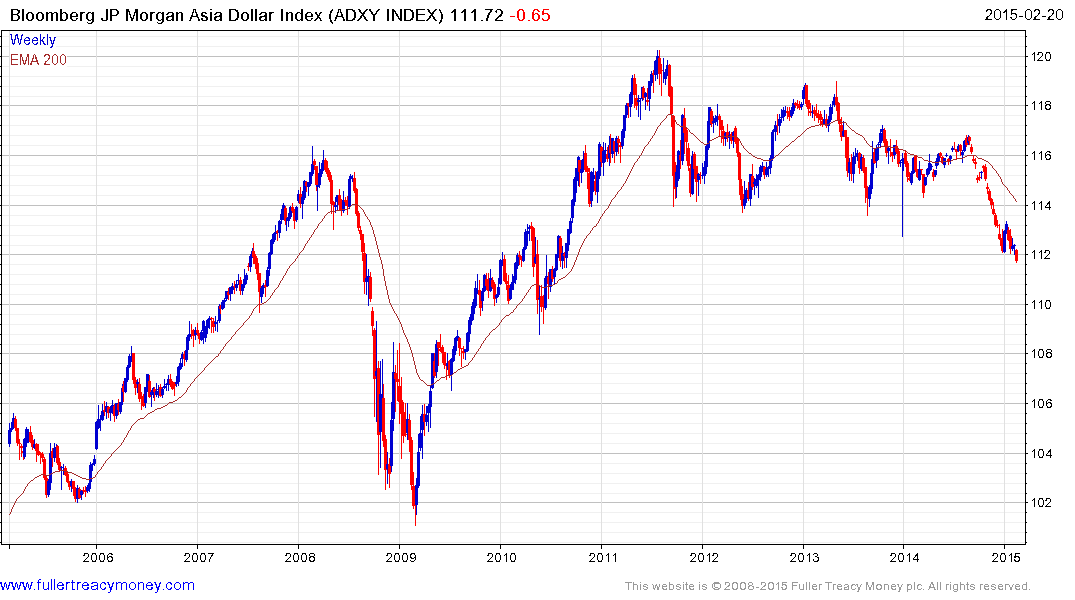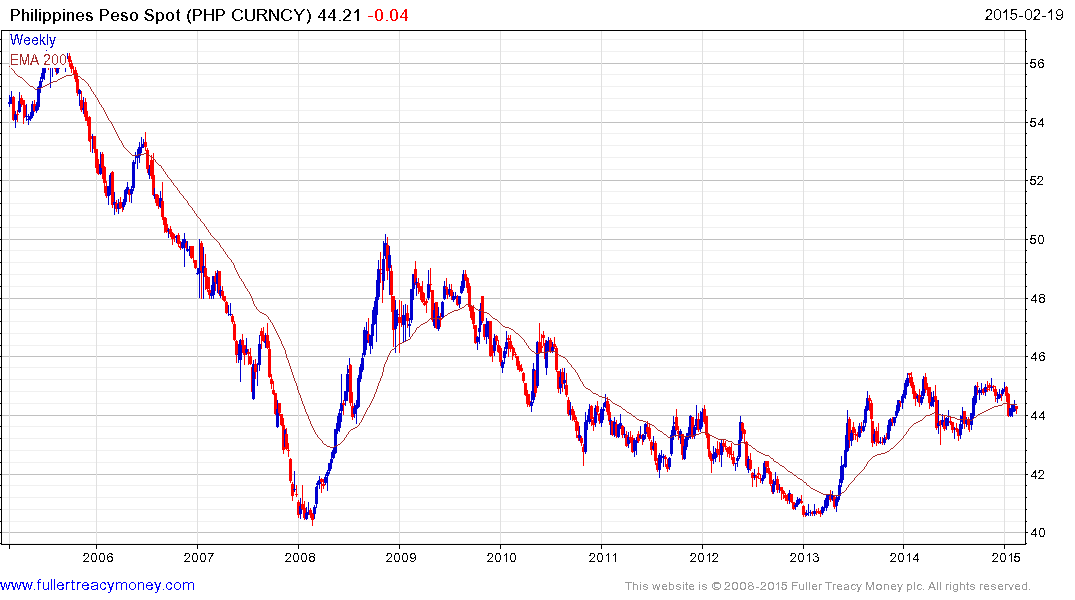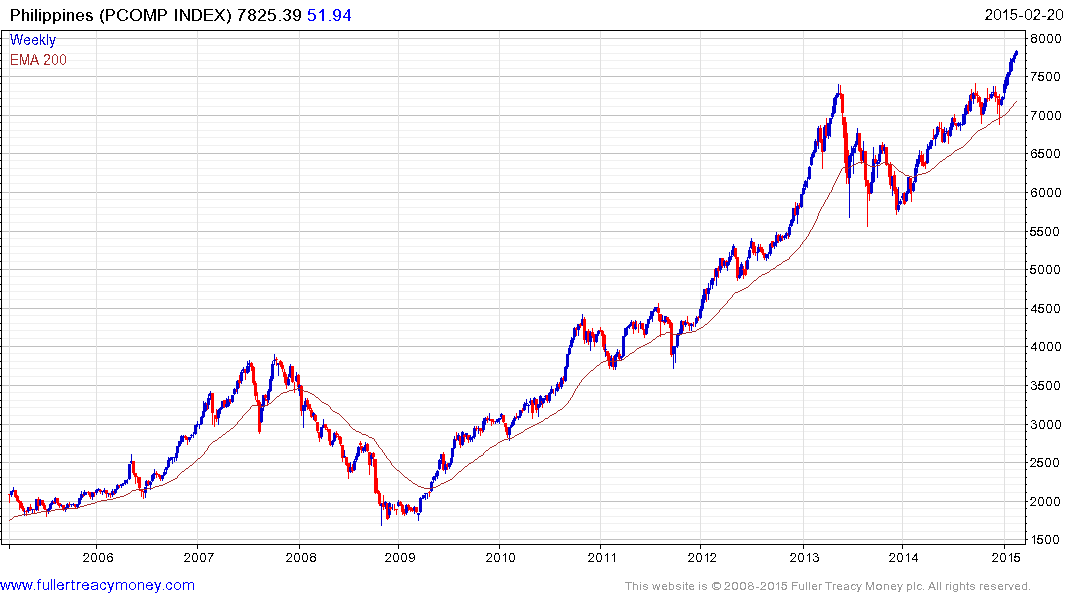Philippines: Watch out for this roadblock
This article by Nyshka Chandran for CNBC may be of interest to subscribers. Here is a section:
While the majority of OFWs reside in the U.S., Australia and Japan are home more than 300,000 Filipinos, while in Europe, they account for 8.7 percent of overseas workers, according to data from government agencies.
?Worry for nothing?
Not everyone is worried about the flows from the remittance tap. Eugenia Fabon Victorino, an economist for Southeast Asia at ANZ, told CNBC she expects healthy remittance growth from the U.S., bolstered by a stronger greenback, to offset any slowdown elsewhere, as 40 percent of remittances come from North America."Growth in total remittances will still be robust this year, averaging around 5-6 percent on the most conservative side," she said.
Another risk remittances face is the impact of cheaper oil prices in the Middle East, home to the second-largest group of OFWs. As oil-producing economies in the Arab world sustain revenue losses from lower oil prices, there are concerns that it could translate into slower job growth for OFWs.
However, past episodes haven't seen a meaningful correlation between the two factors, noted Rahul Bajoria, an economist at Barclays."Remittances have shown a fairly steady increase irrespective of what's happening elsewhere. Moreover, we have noticed a steady trend in the quality of OFW jobs as pay scales and deployment increases," he said.
While in the past Filipino workers were more associated with home help and merchant shipping crews, you are now more likely to meet overseas Filipinos working in hospitals as nurses, radiologists etc. This is a testament to how people have worked to gain a better education and improved earning potential. As a result the flow of remittances back home continues to grow despite the declines in the Euro and Yen relative to the Peso.

In my daily click through of markets the continued weakness of the Asia Dollar Index remains a standout. The Index broke down from a Type-3 top (as taught at The Chart Seminar) in December and moved to a new reaction low today. A sustained move above the 200-day MA would be required to question medium-term supply dominance.

Against this background the relative strength of the Philippine Peso is notable; holding in the PHP43.75 to PHP45.5 range since 2013. While this has the characteristic of a first step above the Type-2 bottom, the currency’s stability has helped improve the performance of the domestic stock market from the perspective of foreign investors.

The Philippine Composite Index completed an 18-month consolidation in December and has now rallied for nine consecutive weeks. Some consolidation of gains is becoming increasing likely, but a sustained move below the 200-day MA would be required to question medium-term upside potential.
Back to top


